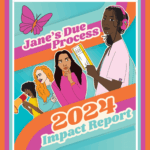Many of us are aware that getting an abortion in Texas isn’t like getting just any other medical procedure. Despite its safety, women must navigate an array of obstacles designed by the legislature to dissuade and/or block her from having an abortion.
Consider these obstacles:
- State-mandated medically unnecessary sonogram
- 24-hour waiting period after sonogram and before abortion
- Restrictions on the abortion pill
- Insurance bans
- Lack of clinics (due to TRAP laws) that create:
- Long waiting periods (around three weeks in some major cities right now)
- Rise in cost of procedure
- Many women must travel long distances to reach the nearest clinic, which requires:
- Time off of work
- Childcare
- Transportation
- Gas money or bus money
- Hotels (in some cases)
After all of this, the women who do make it to the clinics often face a barrage of anti-abortion protesters hurling shaming slurs and excitedly sharing gruesome images.
Now imagine being a teenager and navigating this without parental support. Many of our clients come to us because they cannot safely or feasibly obtain parental consent for an abortion, and so must pursue permission from a judge instead.
Consider all of the obstacles outlined above and then tack on the following:
- Having to apply for a judicial bypass, which requires:
- An attorney
- A hearing in front of a judge
- Getting out of school without parental knowledge (courthouses are only open during regular business hours, not on the weekends)
- Transportation to the courthouse
- Skipping school without parental knowledge for both sonogram and abortion (four hours each minimum)
- Transportation to a clinic (most minors do not have cars and/or licenses)
- Someone trustworthy to drive her home after the procedure
- Paying anywhere between $300 and $2,000 (most high schoolers cannot have full-time jobs)
In short, it’s really hard for teens to access reproductive health care. Read the stories of some of our clients here.




